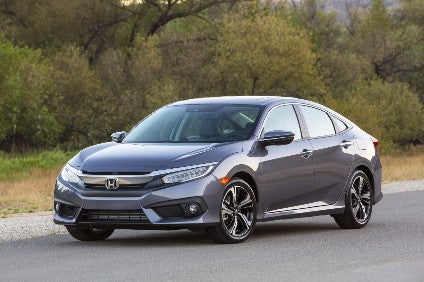
The expected boost from post hurricane vehicle replacements slacked off in October as US light vehicle deliveries fell 1.1% to about 1.36m. Year to date (YTD) volume was about 1.7% behind the first 10 months of 2016, coming in at slightly more than 14.2m.
The turnover did produce an impressive seasonally adjusted selling rate (SAAR) of 18.09m, nearly 216,000 more units that the rate in October 2016. The lion’s share of the new growth came from vehicles produced outside the NAFTA region of Canada, the US and Mexico.

Discover B2B Marketing That Performs
Combine business intelligence and editorial excellence to reach engaged professionals across 36 leading media platforms.
The Detroit automakers produced mixed results with Ford doing better than predicted while Fiat Chrysler and GM did worse than forecast.
Fiat Chrysler took the biggest hit with a deficit of 13.2% as it continued to wean itself off daily rental fleet sales. The diet does seem to be working though; Fiat Chrysler had a lower percentage of fleet sales than either of its Motor City competitors.
Ford beat its year ago figures thanks to a 15.9% jump in deliveries of its F-Series pickup which accounted for 38% of its total volume last month.
Car sales dragged General Motors into the red again. Sales were off 2.2% with small drops in Buick, Cadillac and Chevrolet sales.
Toyota was another winner even though soft Lexus sales took a bite out of a 25.3% surge in utility volumes. The Toyota RAV4 has replaced the Camry as the bestselling non-pickup in America (the F-Series, Chevrolet Silverado and FCA Ram pickups have long term leases on the top three spots).
The Honda Civic is currently the best selling car in the states with a 5,940 unit lead on the Camry YTD. This is fitting because Honda’s 0.9% gain came from its car lines. Both Honda and Acura cars sales improved while light truck sales fell in both brands.
Nissan’s improved Rogue has posted a 24.5% jump in deliveries and currently holds fifth spot in the YTD tally. Nissan and its namesake brand set a new October monthly sales record but paid dearly for it. Its estimated average transaction price fell 3.5%, down US$981 (GBP751). That was the largest drop of any of the major automakers. Moreover, estimated incentives accounted for 16.4% of the lower transaction price. Only Kia’s ratio was higher.
Nissan was hardly alone in paying to move the metal. Though most carmakers reduced their spend compared to September, October saw a year over year increase of $295 (GBP226) in the estimated average incentive bringing it to $3,820 (GBP2,923) a new record. GM had the big spend, averaging $5,105 (GBP3,906) for every vehicle.
Average transaction prices did rise again, setting an October record at $33,226 (GBP25,420), an increase of $297 (GBP227).
The Koreans had another bad month with both Hyundai and Kia in the red. Combined sales were off 12.6%, costing nearly a full percent of market share.
Mercedes-Benz looks to lock up the luxury crown this year with a big lead over second place BMW. Lexus has now dropped to third, just ahead of Audi which reported its 82nd consecutive monthly sales record.
Audi wasn’t the big winner in the Volkswagen Group: that honour went to the VW brand, thanks to sales of the new Tiguan rocketing up 53.9% and another boost from the new US-built Atlas.
The passenger car share of the market shrank to just 33.4% of new vehicle deliveries in October. Crossovers and SUVs still hold the biggest piece of the pie but full size pickups were the story in October. Sales of the big American trucks rose 10.9%, outpacing every other segment. Sales of the smaller mid size trucks actually fell 3.6%.
While most were expecting more sales from hurricanes Harvey and Irma, it’s not really a surprise that played a smaller than expected role in October. There is still a lot of recovery work to be done and insurance claims are still being processed. But the truth is that used car sales are likely to be the bigger beneficiaries.
As mentioned in yesterday’s report, there are lots of lease returns on the market and it is quite likely that a fair percentage of those affected by the storms were upside down on their financing, making a new vehicle purchase difficult.
It still looks like we’ll have a robust sales year, even if it’s not another record. Seventeen million plus is still a lot of cars and trucks.
* indicates a sales record.
**Volkswagen Group figures include Audi, Bentley, Porsche and Volkswagen brands
Other includes estimated sales for Aston-Martin, Ferrari, Lamborghini, Lotus, McLaren, Rolls-Royce and Tesla






